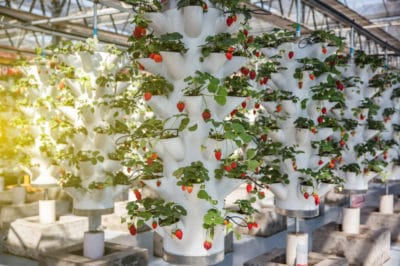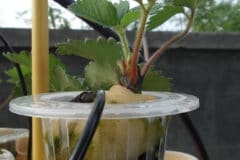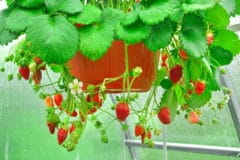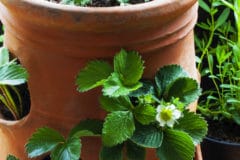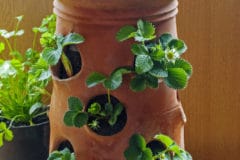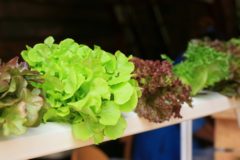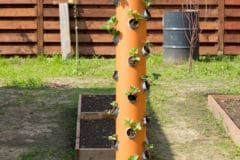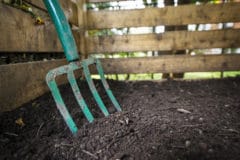What’s Hydroponics?
Hydroponics is the practice of growing plants in a medium that replaces soil. Nutrients are supplied through a liquid solution that saturates the medium. The liquid is constantly recirculated through the growing medium. Advantages of hydroponics include the ability to grow indoors, ease of harvest as the plants can be elevated, increased yields and the elimination of weed problems.
Growing Tubes or Towers
Hydroponic strawberries can be grown vertically or horizontally. What is known as a strawberry tower takes up little space. PVC pipe is a common material for towers. Holes are drilled at designated intervals for plant starts. Horizontal hydroponic systems are more commonly used in commercial growing, but can be adapted for home use. These may be troughs or tubes with pre-drilled holes.
Hydroponic Mediums
You have many choices of mediums, each with its advantages and disadvantages. Make your choice based on these plus availability and cost. Here are some possibilities:
- Bark compost
- Coconut fiber/coir
- Expanded clay
- Oasis cubes
- Pea gravel
- Peat
- Perlite
- Polyurethane
- Pumice
- Rice hulls
- Rockwool/Stonewool
- Sand
- Vermiculite.
Choosing Varieties
Almost any variety of strawberry can be grown hydroponically. If you are growing indoors you are not limited to the berries adapted to your climate. June bearers will typically offer the largest berries and also the largest crop, but they bear only once a year. Ever-bearers will fruit twice a year, while day-neutral varieties will bear year round if given the correct temperatures.
Pollination
Naturally grown strawberries are pollinated by a combination of methods. They self-pollinate, receive pollen on the wind and are pollinated by insects – primarily honeybees.
When growing indoors, you’ll need to pollinate the flowers. Placing a fan where it will blow on the flowers simulates wind pollination. You can also pollinate individual blossoms with a cotton swab or fine paintbrush. Do this at least every other day during flowering season.
Managing Hydroponically Grown Strawberries
No matter what type of strawberry you grow, it’s often best to treat hydroponic strawberries as annuals. They need winter chilling, which cannot usually be achieved indoors. If you are growing in an unheated greenhouse or garage, however, you may be able to grow crops for three years before replacing plants. Monitor nutrient levels according to the manufacturers’ directions and be scrupulous about cleaning systems in between plantings.
